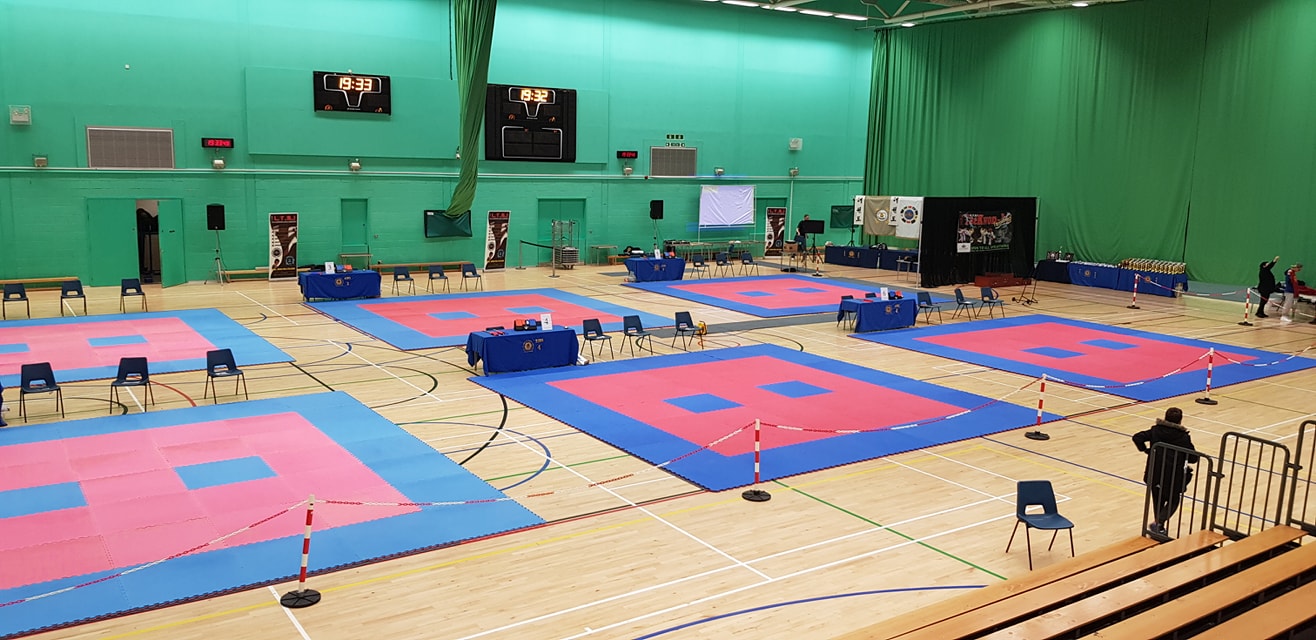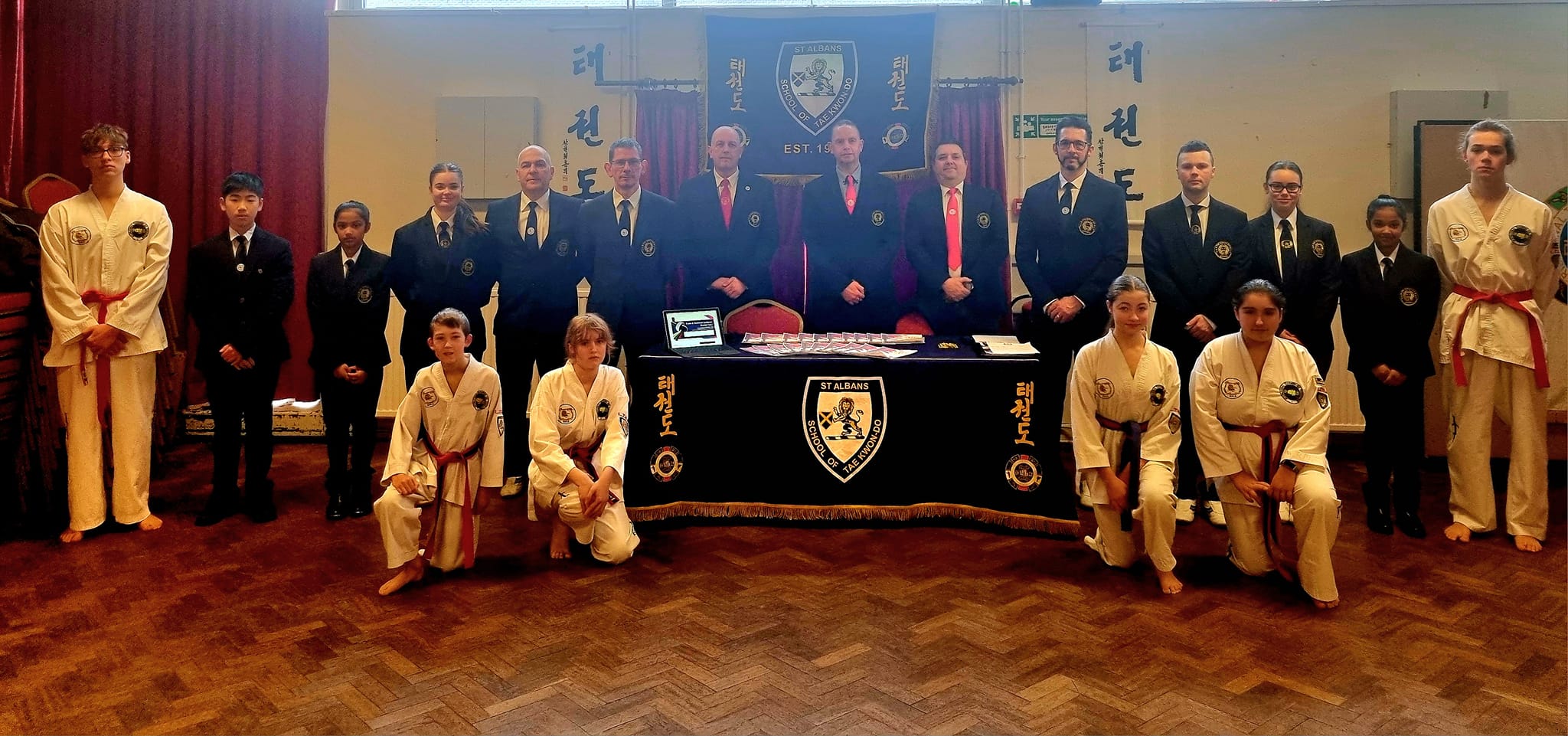Taekwondo Classes & Affiliation with the L.T.S.I.
L.T.S.I. Quality Taekwondo classes and event providers since 2004
Next major event
XI English TKD Opens
Day(s)
:
Hour(s)
:
Minute(s)
:
Second(s)

Value for money
Competitive pricing set across the board. The L.T.S.I. prides itself on providing the best at every level.
The key to quality
No compromise on quality training, with a syllabus admired by many worldwide.
24/7 Website Support
Training tips and videos on our site 24 hours a day to help you on your journey.
Multiple Locations
We have full time Instructors and affiliate schools with us. We also welcome all U.K. groups and schools into our family as of January 2024.
L.T.S.I. Taekwondo leading the way
Looking for Taekwondo classes? Interested in Martial Arts? You’ve come to the right place. Our website lists numerous clubs offering Taekwondo, a fascinating martial art. There are two styles of Taekwondo: ITF and WT. Discover more on our site, explore the history and facts, and reach out to our instructors. They all provide FREE trial classes, so there’s nothing to lose.
Instructors: We have all become disheartened by unscrupulous organizations that promise the world on their sophisticated websites. Once you join, they gradually attempt to alter your uniforms, inflate prices, and even employ deceitful tactics to turn your students against you. It’s the classic strategy of divide and conquer from within. They assure you that you are valuable to them, but you soon realize it’s all about the fees you’re paying, and frankly, you don’t matter to them. We understand because we’ve experienced it ourselves.
Leading the L.T.S.I. is Senior Master Snow, an 8th Degree Black Belt certified in the ITF system. Known to many as Master Snow, Chris has dedicated nearly four decades to the martial art. He remains one of the most active senior Masters, training personally for two hours daily. His commitment to action over words is widely recognized. Supporting the L.T.S.I., Mr. Smith, a 6th Degree Black Belt, has worked alongside him since 1997 together with Miss Leonard. The trio manages the L.T.S.I.’s administration, forming a highly committed team.
The L.T.S.I. has no Chairman, no board members, and will not entertain one person using authority to govern – all decisions are made by the administration once we are sure it’s the best choice for everyone.
A network
We have a network of groups in our events system that work with us by attending our events, seminars, and courses. We can offer any U.K. Instructor affiliate membership with the guarantee of a no-interference policy and no change in what you are currently doing.
As of January 2024, memberships we offer:
– A complimentary service that includes a free club website link, which is merely a mutual link without any additional commitments.
– Gain access to all services without any obligations, complete with ITF certification, all provided at cost.
– Obtain full LTSI membership, insurance, certification, licenses, and all services for an annual fee of £30.
- ITF Black Belt certification issued via us (only 4th Dans and above may examine to half of their grade)
- L.T.S.I. Black Belt status cards, if required
- Instructor insurance, DBS, and first aid courses, if required
- Member-to-member insurance, if required
- All clubs get registered on this website with their own customizable page
- Access to Masters and Grandmasters through us for exams and seminars
- L.T.S.I. color belt certification, if required
We can offer so much and all for the best competitively priced value in the U.K. – the beauty is you keep your identity with no interference and NO grubby politics.
Why choose us? If the corporate rat race and domineering bosses have worn you down, we may be the answer you seek. Our mission is to cultivate absolute freedom in its truest form. While some entities in the U.K. may align with large governing bodies like the NGB, a number of our associates eschew all forms of governance. This led us to develop an uncomplicated yet potent alternative.
We cater to all, providing a gateway for those drawn to the ITF system but who are averse to the restrictions of affiliations or governance. You can join us under an exceedingly adaptable association.
Like numerous others, our desire is to relish the art devoid of any ego, to train collectively, and to share our common values and zeal. Although we see merit in competition, it is the humility and commitment to mastering the art that we hold in higher regard.
The L.T.S.I. Catch!
The L.T.S.I. offers a straightforward deal: if you wish to list your school on our website for free, simply send us a link and reciprocate by linking back to us from your site. For access to all events, certifications, and more, while retaining your own suits and syllabus, opt for the £50 deal. If you prefer full integration with LTSI, that’s excellent, but it requires wearing our suits, using our syllabus, and adhering to certain rules to ensure harmonious collaboration.
Why join or affiliate to the L.T.S.I.

Top class events / awards as standard
Since 2004, the L.T.S.I. has hosted events in the U.K. that facilitate I.T.F. and independents from all over the four nations. The events have rules that suit both sides, meaning our opens are the fairest on the market. Profit is not our goal, unity and networking is. The awards we offer are amongst the best around - FACT!
No compromise on standards or dress code
Dress code is one of our top priority. All our Black Belts are required to attend all events in full official attire as above. There is NO compromise on how we conduct ourselves.
Satisfaction Guaranteed
Quality across the board
Value for money always
Traditional values always
Fully insured schools of Martial Arts
All grades fully verified
Many events hosted yearly
Our next main event
We host a number of events every year, weather it is open Taekwon-do championships that are trusted and proven or have an interest in seminars and courses we have you covered. Our affiliates have 100% freedom and we never interfere.
We've got you covered all the way
Whether it's insurance, recognition in a national group or looking for international recognition under an ITF body, we can help. Join us as a fully fledged member, or just affiliate to us....the choice is 100% yours with no hard sell.
What do I need to do if I'm interested?
Simply fill in the online form. All enquiries are 100% confidential, so no bridges will be burnt. We tend to get back in touch after we have done some research on you - this usually takes about 24 hours.
What happens if I join as a full member then want affiliated membership?
We are not an organisation that rules on fear (you know, the ones that attack you just because you decide it's not for you). Let us know and that's it. To be honest, we often say affiliation is best, then go full member after if you like. Again, there's no pressure.
Can I keep my own identity?
If you join fully, you gain many benefits, but it means using our suits etc. If you take affiliation, nothing changes and you can get access to everything we use at cost. We don't control anyone - all we ask is you follow correct timelines on exams and never put our group into disrepute online.
Can I grade my own students?
The rules are set by ITF system for all full members and affiliates -
- Only 4th Degrees that have been on IIC's can examine members
- 4th and 5th Degree can grade up to 2nd Degree
- 6th Degree can grade up to 3rd Degree
- 7th Degree can grade up to 5th Degree
- 8th Degree can grade up to 7th Degree (7th is by permission of ITF Promotion committee)
When you join, we will request proof of your promotions unless we know you already.
Do you have a constitution?
The L.T.S.I. sees constitutions as a way to enforce rules set by the organisation. We have a very basic Charter that works. No Board of Control, just an administration that looks after daily activities.
Full benefit information is only available to full members.
Our club was a full member of the L.T.S.I. in the start. We left to be part of another ITF body and chose to come back. We are now affiliated - no fuss, no pressure. We enter their events and love them. Highly recommended by Berkhamstead TKD
I've been a student of Master Snow's since 1996. I choose full membership as it works for my clubs and I have no interest in the politics, No stress, no pressure. The administration is on point and events are pretty classy.
We were affiliated to the L.T.S.I. for a number of years and never had any issues. Sadly, after Covid-19 my clubs folded, but I can verify their admin is pretty top notch. It's worth a punt if you want freedom.
Seminars with World class Masters and Grandmasters
The L.T.S.I. is led by Master Snow, 8th Degree
Despite our group head having one of the highest level degree belts in Taekwondo, we have a philosophy to provide the best Masters around for a given field. Whether it's sparring, patterns or technical, you can be sure the L.T.S.I. will always give you the best money can buy and make it competitive.
Grandmasters of the highest creed
We know our limits - getting a Grandmaster in from a reputable organisation gives our membership and attendees the best low cost experience money can buy.





